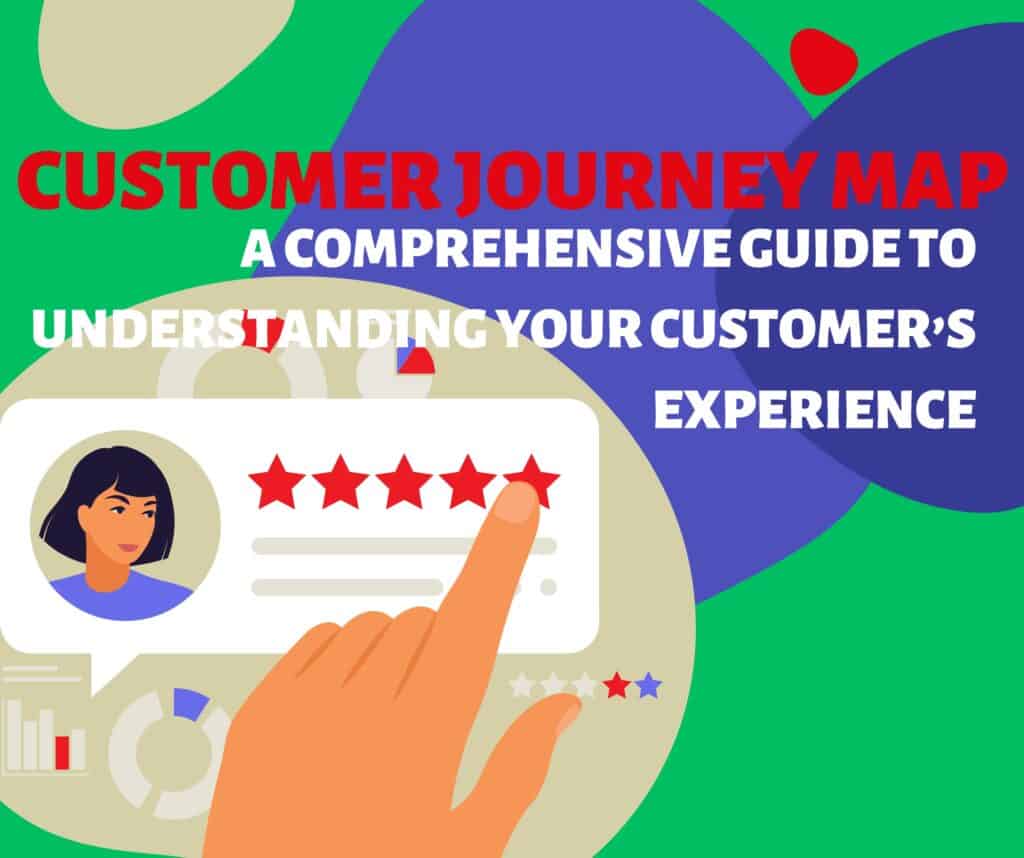In recent years, online lending has transformed the way individuals and businesses access financial resources. Gone are the days of lengthy paperwork and in-person visits to banks. Today, with just a few clicks, borrowers can connect with a variety of lenders, compare offers, and secure funding from the comfort of their homes. Online lending encompasses a range of financial products, including personal loans, business loans, and peer-to-peer lending, making it an attractive option for many.
The rise of digital technology has not only streamlined the borrowing process but also democratized access to credit. This shift has opened doors for those who may have struggled to obtain loans through traditional means, such as individuals with limited credit history or small businesses in need of quick capital. However, with these advantages come challenges that borrowers must navigate, including the potential for scams and the complexities of comparing various lending options.
Understanding online lending in the digital age is crucial for anyone considering borrowing money. With numerous platforms available and varying terms and conditions, making informed decisions can save borrowers time, money, and frustration. Additionally, as online lending continues to evolve, being aware of trends, risks, and best practices can empower consumers to utilize these services safely and effectively. By gaining a deeper understanding of online lending, readers will be better equipped to navigate the financial landscape and make choices that align with their personal or business goals.
Stop wishing for success—start working for it. Click here to begin!
Try Wealthy Affiliate (For Free).
What is Online Lending?
Definition of Online Lending
Online lending refers to the process of borrowing money through digital platforms instead of traditional financial institutions. This method allows borrowers to apply for loans, receive approval, and obtain funds entirely online, streamlining the borrowing experience. Online lending encompasses a wide range of financial products, including personal loans, business loans, student loans, and more, catering to diverse borrowing needs. By leveraging technology, online lenders can assess applicants more quickly, often leading to faster funding and more flexible loan terms.
How It Differs from Traditional Lending
While traditional lending typically involves in-person interactions with banks or credit unions, online lending is characterized by its digital-first approach. Here are some key differences between the two:
- Application Process: Traditional lenders often require extensive paperwork and face-to-face meetings, which can be time-consuming. In contrast, online lending platforms offer simplified applications, allowing borrowers to submit their information via an online form in just a few minutes.
- Approval Time: Traditional lenders may take days or even weeks to process loan applications and make decisions. Online lenders, on the other hand, can provide approval within hours or even minutes, making them an appealing option for those needing quick access to funds.
- Loan Availability: Traditional banks may have stricter criteria for lending, often favoring applicants with higher credit scores and established financial histories. Online lenders tend to be more flexible, catering to a broader range of credit profiles, which can benefit borrowers who might struggle to qualify for loans through conventional means.
- Interest Rates and Fees: Interest rates and fees can vary significantly between traditional and online lenders. Online lenders may offer competitive rates, particularly for borrowers with good credit, but those with poor credit may face higher interest rates. Traditional banks may have more stable rates but often charge higher fees.
Types of Online Lenders
The online lending landscape is diverse, with several types of lenders catering to different borrower needs. Here are the primary categories:
- Peer-to-Peer (P2P) Lenders:
- P2P lending platforms connect individual borrowers with individual investors willing to fund loans. This model eliminates the need for traditional banks, allowing borrowers to access funds directly from investors.
- P2P lenders often provide personal loans at competitive interest rates, and they may have more lenient eligibility requirements than traditional lenders.
- Fintech Companies:
- Financial technology (fintech) companies have emerged as significant players in the online lending space. These companies use technology to offer innovative lending solutions, often focusing on speed, efficiency, and user experience.
- Fintech lenders may provide a range of products, including personal loans, business loans, and specialized financing options tailored to specific needs.
- Traditional Banks with Online Platforms:
- Many traditional banks have adapted to the digital age by offering online lending services. These banks often provide a hybrid model, allowing customers to apply for loans online while still benefiting from the bank’s established reputation and customer support.
- While traditional banks may have stricter application processes, they often offer a wider range of financial products, including mortgages and auto loans, alongside their online lending options.
Benefits of Online Lending
Online lending has revolutionized the borrowing experience, offering numerous advantages over traditional methods. From ease of access to faster approvals, online lending provides borrowers with a more streamlined and efficient way to secure funds. Below are some of the key benefits of online lending:
Convenience and Accessibility
24/7 Availability
One of the biggest advantages of online lending is its round-the-clock availability. Unlike traditional banks that operate during specific hours, online lenders allow borrowers to apply for loans at any time of the day or night, making it a flexible option for those with busy schedules or urgent financial needs. Whether you’re at home, at work, or on the go, you can easily submit a loan application from any internet-enabled device.
Easy Application Process
The application process for online lending is often far simpler than that of traditional banks. Instead of filling out lengthy forms and waiting in line, borrowers can complete a quick, user-friendly online form in just a few minutes. The requirements are typically minimal, with most lenders asking for basic information like your income, credit score, and identification details. This streamlined approach makes it accessible to a wider range of people, including those who may be intimidated by traditional loan processes.
Speed and Efficiency
Faster Approval and Disbursement
Unlike traditional lenders, which may take days or even weeks to process loan applications, online lenders are known for their speed. Many platforms use automated systems to assess applications, meaning borrowers can often receive approval in a matter of hours. Once approved, the funds can be disbursed quickly—sometimes within the same day—making online lending an excellent option for those who need quick access to cash for emergencies or time-sensitive investments.
Disclaimer: Some of the links in this post are affiliate links, meaning I may earn a commission if you purchase through them. These resources offer valuable tools and support for your online business.
Try Wealthy Affiliate (For Free).
Minimal Paperwork
Gone are the days of printing out and submitting extensive paperwork for a loan. Online lending significantly reduces the amount of documentation required, often allowing borrowers to submit digital copies of necessary documents like bank statements and identification. This not only speeds up the approval process but also makes the entire experience more convenient, reducing the hassle of organizing physical paperwork and in-person submissions.
Competitive Interest Rates
Lower Rates Compared to Traditional Lenders
Online lenders frequently offer competitive interest rates, often lower than those provided by traditional banks. This is because online lending platforms operate with fewer overhead costs—such as physical branches and large teams of employees—allowing them to pass on savings to the borrower in the form of lower interest rates. For borrowers with good credit, this can lead to substantial savings over the life of a loan.
Potential for Personalized Offers
Many online lenders use sophisticated algorithms to analyze a borrower’s financial profile and offer personalized loan terms. This means that, depending on your creditworthiness and financial situation, you may receive tailored offers with lower interest rates, better repayment terms, or higher loan amounts. Traditional lenders tend to have more rigid loan structures, while online platforms are more adaptable to individual needs.
Diverse Loan Options
Personal Loans, Business Loans, Student Loans, and More
Online lending platforms provide a wide variety of loan products, catering to different borrowing needs. Whether you’re looking for a personal loan to cover medical expenses, a business loan to grow your startup, or a student loan to finance your education, online lenders offer customized solutions for different financial situations. This variety ensures that borrowers can find the right type of loan to suit their specific needs.
- Personal Loans: These are the most common loans available online and can be used for various purposes, such as home improvements, consolidating debt, or unexpected expenses.
- Business Loans: Entrepreneurs and small business owners can access online business loans to fund operations, purchase equipment, or expand their business without the complexities of traditional bank loans.
- Student Loans: Online lenders also offer student loans, often with flexible repayment options, making it easier for students and their families to finance higher education.
Risks and Considerations
While online lending offers numerous benefits, it’s important for borrowers to be aware of the potential risks. Navigating the digital lending landscape can be tricky, and without the right precautions, borrowers may encounter scams, high interest rates, or issues with data privacy. Below are some of the key risks and considerations to keep in mind when exploring online lending options.
Scams and Fraud
Identifying Legitimate Lenders
One of the most significant risks in online lending is falling victim to fraudulent lenders. Scammers often create fake websites or pose as legitimate lenders to steal personal information or extort money from unsuspecting borrowers. Before applying for a loan, it’s essential to verify the legitimacy of the lender. Look for key indicators such as a professional website, a verifiable physical address, and a customer service contact. Legitimate lenders should be registered and licensed to operate in your country or state.
Red Flags to Watch For
There are several warning signs that can help you identify a potential scam:
- Upfront Fees: Legitimate lenders do not ask for fees before approving your loan. Be cautious if a lender requests payment in advance for “processing” or “administration” fees.
- Guaranteed Approval: No legitimate lender can guarantee loan approval before reviewing your financial situation. Beware of lenders that offer loans without checking your credit or financial background.
- Lack of Transparency: If the lender is vague about the terms of the loan, interest rates, or fees, this is a major red flag. Always read the fine print and request detailed loan information before proceeding.
- Unprofessional Communication: Poorly written emails, websites with spelling errors, or high-pressure sales tactics are common tactics used by scammers. Legitimate lenders will have professional, clear communication and won’t pressure you into making quick decisions.
Higher Interest Rates for Poor Credit
Impact of Credit Score on Loan Terms
Your credit score plays a crucial role in determining the terms of your loan. Online lenders typically offer competitive interest rates to borrowers with good or excellent credit scores, but those with lower credit scores may face much higher rates. This can make online loans significantly more expensive for borrowers with poor credit. If your credit score is less than ideal, it’s important to carefully evaluate the total cost of the loan, including interest and fees, before committing to any agreement.
Alternatives for Bad Credit
If you have a low credit score, there are still options to consider. Some online lenders specialize in offering loans to individuals with bad credit, but these may come with higher interest rates. Alternatives to high-interest loans include:
- Credit Unions: Credit unions may offer more affordable loans to members with lower credit scores, and they often provide personalized service.
- Secured Loans: If you can offer collateral, such as a car or savings account, you may qualify for a secured loan with lower interest rates.
- Co-Signers: Having a co-signer with good credit can help you qualify for better terms on a loan. However, both you and the co-signer are responsible for repaying the loan.
Privacy and Data Security
Risks Associated with Sharing Personal Information Online
When applying for loans online, you will be required to share sensitive personal and financial information, such as your Social Security number, bank account details, and income history. Unfortunately, online platforms are often targets for cyberattacks, and unsecured websites can expose your data to hackers. This puts borrowers at risk of identity theft, financial fraud, and other forms of cybercrime.
Ensuring Data Protection
To minimize these risks, it’s essential to prioritize lenders with strong security protocols. Here are some ways to ensure your data remains protected:
- Look for HTTPS: Ensure the lender’s website has an “HTTPS” URL, indicating a secure connection. The padlock icon in the address bar is another sign that your information is encrypted and safe from prying eyes.
- Data Encryption: Check if the lender uses data encryption to protect the personal information you submit. Most legitimate online lenders use advanced encryption technologies to safeguard sensitive data.
- Privacy Policies: Reputable lenders should have a transparent privacy policy that explains how your data will be collected, used, and protected. Always review this policy to understand what steps the lender takes to ensure your information stays secure.
- Avoid Public Wi-Fi: When applying for loans or submitting personal information, always use a secure, private internet connection. Avoid public Wi-Fi networks, which can be easily compromised by hackers.
How to Choose the Right Online Lender
Selecting the right online lender is crucial to ensuring a positive borrowing experience. With so many options available, it’s important to approach the process carefully, conducting thorough research and understanding the terms of each offer. Below are some key steps to guide you in choosing the best online lender for your needs.
Every great journey begins with a single step. Take yours by starting your business today!
Try Wealthy Affiliate (For Free).
Research and Comparison
Comparing Interest Rates and Terms
Before settling on an online lender, it’s essential to shop around and compare the interest rates, loan terms, and fees that different platforms offer. Interest rates can vary significantly between lenders, especially depending on your credit score and loan type. Some lenders may offer low introductory rates, while others might have fixed or variable interest rates that change over time. Additionally, consider the loan’s repayment period, as some lenders may provide more flexible repayment terms that allow you to spread payments over several years, while others may require shorter repayment schedules with higher monthly payments.
Comparing different loan offers side by side will help you make an informed decision. Look for:
- Annual Percentage Rate (APR): This includes both interest and fees, giving you a complete picture of the cost.
- Repayment Terms: Assess whether you can comfortably meet the lender’s repayment schedule.
- Fees: Be on the lookout for any hidden fees, such as origination fees, late fees, or early repayment penalties.
Reading Reviews and Ratings
Reading online reviews and checking lender ratings is another crucial step in the research process. Reviews from past borrowers provide valuable insight into the customer service, loan processing experience, and overall satisfaction with a lender. Trustworthy reviews can help you identify any potential issues, such as delays in fund disbursement, unclear terms, or poor customer support.
Ratings on reputable review sites, such as Trustpilot, the Better Business Bureau (BBB), or Google Reviews, can give you a sense of how reliable and transparent a lender is. Pay attention to common complaints or recurring problems raised by previous customers, as these may be indicators of what you could experience.
Understanding Terms and Conditions
Loan Agreements and Fees
Before committing to any online loan, carefully read and understand the loan agreement. The loan agreement will outline important details, such as the interest rate, repayment terms, fees, and any conditions related to borrowing. Many online lenders may have additional fees, such as application fees, processing fees, or prepayment penalties, which can significantly affect the cost of the loan. Ensure that you’re fully aware of all these fees and factor them into the total cost of borrowing.
If you’re unclear about any part of the loan agreement, don’t hesitate to ask the lender for clarification. It’s crucial to understand the financial commitment you’re entering into.
Repayment Schedules
Understanding the repayment schedule is another critical aspect of choosing the right online lender. Different lenders offer varying repayment options, from fixed monthly payments to more flexible arrangements. Make sure that the repayment schedule aligns with your financial situation, allowing you to make payments comfortably without stretching your budget. Consider factors such as:
- Monthly payment amounts: Are the payments manageable within your budget?
- Payment frequency: Do you have the option to pay biweekly, monthly, or quarterly?
- Automatic payment options: Some lenders offer discounts or lower interest rates if you set up automatic payments.
A clear understanding of your repayment obligations can help prevent late payments or defaulting on the loan, which could harm your credit score.
Checking Lender Credentials
Verifying Licensing and Registration
One of the most important steps in choosing an online lender is verifying their credentials. Legitimate online lenders are required to be registered and licensed to operate in specific states or countries. This ensures they are regulated and follow the legal guidelines set forth by financial authorities. Always verify the lender’s licensing status, especially if you are borrowing from an unfamiliar company or a lender that operates entirely online.
To verify the credentials:
- Check the lender’s website: Most legitimate lenders will have a page outlining their licenses and registrations.
- Use government resources: You can often verify a lender’s licensing through state financial regulatory agencies or national consumer protection websites.
- Consult the Better Business Bureau (BBB): The BBB can provide insight into a lender’s reputation and whether they are involved in any unresolved disputes or complaints.
Contacting Customer Service for Queries
Before finalizing your decision, it’s wise to contact the lender’s customer service team with any questions you may have. A responsive and helpful customer service team is a good indicator of a reliable lender. If the lender is difficult to reach, vague in their responses, or provides unclear information, consider this a red flag.
When speaking with customer service, inquire about:
- Loan terms and repayment options: Clarify any details that you don’t fully understand.
- Fees and penalties: Ask for a clear breakdown of all potential fees or penalties associated with the loan.
- Support after approval: Find out what level of customer support is available after the loan is approved, such as help with repayments or any issues that may arise during the loan term.
Tips for a Successful Online Lending Experience
Navigating the world of online lending can be smooth and beneficial if approached with proper preparation and understanding. To ensure a successful experience, borrowers should take certain steps to improve their chances of approval, secure better loan terms, and protect their financial well-being. Below are some actionable tips for making the most out of the online lending process.
Prepare Your Financial Documents
Required Documentation for Loan Application
Before applying for a loan online, it’s important to gather and organize the necessary financial documents that lenders will likely request. Having these documents ready can speed up the application process and make you appear more prepared and reliable to potential lenders. Common documents required by online lenders include:
- Proof of Income: Pay stubs, tax returns, or bank statements that show consistent income.
- Proof of Identity: A government-issued ID, such as a driver’s license or passport.
- Credit History: Lenders will usually request permission to check your credit report, but it helps to have an idea of your own credit score beforehand.
- Employment Verification: Some lenders may require documentation from your employer to verify your employment status.
- Debt Information: A list of any current debts, such as credit card balances, student loans, or mortgages.
Preparing these documents in advance ensures that your loan application process is seamless and that you avoid any unnecessary delays or rejections due to incomplete information.
Improve Your Credit Score
Steps to Enhance Creditworthiness
Your credit score plays a significant role in determining whether you’ll qualify for a loan and what interest rate you’ll receive. A higher credit score can give you access to better loan terms and lower interest rates, while a lower score may result in higher borrowing costs. Before applying for an online loan, it may be worthwhile to take steps to improve your credit score:
- Pay Bills on Time: Consistently making on-time payments is one of the most effective ways to raise your credit score. Late payments can have a negative impact on your score.
- Reduce Debt: Paying down credit card balances and other debts can improve your debt-to-income ratio, which lenders use to assess your financial health.
- Dispute Credit Report Errors: Mistakes on your credit report can unfairly lower your score. Check your credit report for any errors, such as incorrect account information, and dispute them with the credit bureau if necessary.
- Avoid Applying for New Credit: Each time you apply for credit, a hard inquiry is added to your credit report, which can temporarily lower your score. Try to minimize new credit applications in the months leading up to your online loan application.
Taking these proactive steps will increase your chances of being approved for an online loan and securing more favorable terms.
Your path to financial independence begins with a choice. Make it today!
Try Wealthy Affiliate (For Free).
Use Online Calculators
Tools to Estimate Loan Payments and Affordability
One of the advantages of online lending platforms is the availability of loan calculators and other financial tools that can help you estimate your potential loan costs. Using these tools before applying for a loan can give you a clearer understanding of what you can afford and what your monthly payments will look like. Key tools to consider include:
- Loan Payment Calculators: These allow you to input the loan amount, interest rate, and repayment term to estimate your monthly payment. This helps you determine whether the loan fits within your budget.
- Debt-to-Income Ratio Calculators: This tool helps you calculate the percentage of your monthly income that goes toward debt payments. Most lenders prefer borrowers with a debt-to-income ratio below 40%, so knowing your ratio can help you assess your eligibility.
- Interest Rate Calculators: These tools estimate how different interest rates impact the total cost of your loan. If you have a low credit score, you may want to check how higher rates affect affordability.
By using these calculators, you can avoid taking out a loan that exceeds your financial capabilities and set realistic expectations for repayment.
Read the Fine Print
Understanding the Terms and Conditions of Your Loan Agreement
One of the most critical steps in the online lending process is thoroughly reading and understanding the fine print of your loan agreement. While online lending platforms often make it easy to apply for a loan, it’s important to take the time to review all of the details of the agreement, as they can greatly affect your overall borrowing costs. Key areas to focus on include:
- Interest Rate and APR: Ensure that you understand the interest rate you are being offered, and whether it is fixed or variable. The APR (Annual Percentage Rate) reflects the total cost of borrowing, including fees, so make sure to compare APRs when evaluating different loan options.
- Fees and Penalties: Be aware of any additional fees, such as origination fees, late payment penalties, or early repayment fees. Some lenders may charge a penalty for paying off your loan early, which could limit your ability to save on interest by making extra payments.
- Repayment Schedule: Confirm the repayment terms, including the length of the loan and the frequency of payments. Make sure the schedule aligns with your financial situation.
- Prepayment Options: If you plan to pay off the loan ahead of schedule, ensure that the lender does not charge a prepayment penalty. Some lenders encourage early payments, while others may impose penalties.
Conclusion
Online lending has revolutionized the way individuals and businesses access financial resources. As digital platforms continue to grow and evolve, the convenience and accessibility of online lending have made it an attractive option for many. However, before committing to an online loan, it’s crucial to carefully weigh the benefits, risks, and considerations.
Summary of Key Points About Online Lending
Throughout this article, we’ve explored the key aspects of online lending, from its definition and various types of lenders to the advantages and potential risks involved. The main takeaways include:
- Convenience and Accessibility: Online lending offers 24/7 access to financial services with a simple, user-friendly application process. This makes it an attractive option for borrowers who need quick access to funds without visiting physical branches.
- Speed and Efficiency: With faster approval times and less paperwork compared to traditional lenders, online lending provides an efficient route to securing funds.
- Competitive Interest Rates: Many online lenders offer competitive rates, especially to those with good credit scores. However, for borrowers with poor credit, rates can be significantly higher.
- Diverse Loan Options: Whether you’re seeking a personal loan, business loan, or student loan, online lenders offer a wide variety of loan products to suit different needs.
- Risks and Considerations: Borrowers must remain vigilant about scams and fraudulent lenders. It’s also essential to assess your credit score and understand the terms and conditions of any loan agreement.
Encouragement to Weigh the Pros and Cons Before Making a Decision
While the benefits of online lending are clear, it’s equally important to consider the risks. Scams, higher interest rates for poor credit, and privacy concerns are real challenges that borrowers must navigate. Conducting thorough research and comparing offers from different online lenders can help you avoid pitfalls and secure the best deal. Understanding the loan’s terms, fees, and repayment schedule is essential to making a well-informed decision that aligns with your financial goals.
Final Thoughts on the Importance of Informed Borrowing
Informed borrowing is key to a successful online lending experience. Taking the time to assess your financial needs, improve your credit score, and carefully read the fine print will empower you to make confident borrowing decisions. Whether you’re looking for a quick personal loan or long-term business financing, approaching online lending with knowledge and caution ensures that you get the best possible outcome without unnecessary risks.
Turn your passion into profit. Click here to start your business now!
Try Wealthy Affiliate (For Free).
By weighing the pros and cons, conducting careful research, and understanding your responsibilities as a borrower, you can leverage the benefits of online lending to meet your financial needs responsibly.
We’d love to hear from you! Have you ever applied for a loan through an online lender? What was your experience like? If you have any questions or need further clarification about online lending, feel free to ask in the comments below. Your insights and questions could help others who are navigating the online lending process! Let’s start a conversation!








I have been surfing online more than 3 hours today yet I never found any interesting article like yours It is pretty worth enough for me In my opinion if all web owners and bloggers made good content as you did the web will be much more useful than ever before
I’m truly enjoying the design and layout of your site. It’s a very easy on the eyes which makes it much more pleasant for me to come here and visit more often. Did you hire out a developer to create your theme? Superb work!